The Economics and Statistics Division maintains archives of previous publications for accountability purposes, but makes no updates to keep these documents current with the latest data revisions from Statistics Canada. As a result, information in older documents may not be accurate. Please exercise caution when referring to older documents. For the latest information and historical data, please contact the individual listed to the right.
<--- Return to Archive
For additional information relating to this article, please contact:
October 31, 2024PAYROLL EMPLOYMENT AND AVERAGE WEEKLY EARNINGS, AUGUST 2024 Monthly (August 2024 vs July 2024, seasonally adjusted)
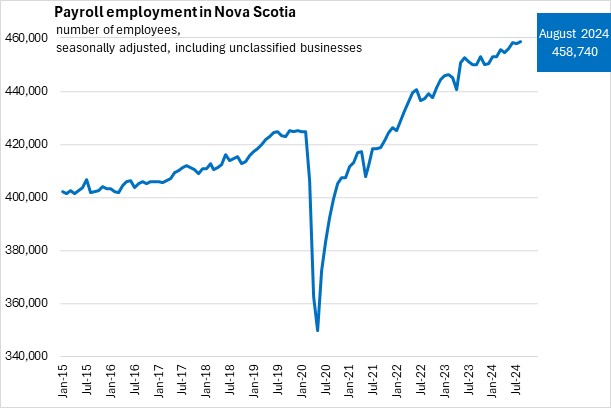
Nova Scotia had 458,740 payroll employees in August 2024, up 0.1% (+685) compared to July 2024. Canada had 18.23 million employees, up 0.1% from July 2024. There were gains in seven provinces, led by New Brunswick. Newfoundland and Labrador reported the largest decline.
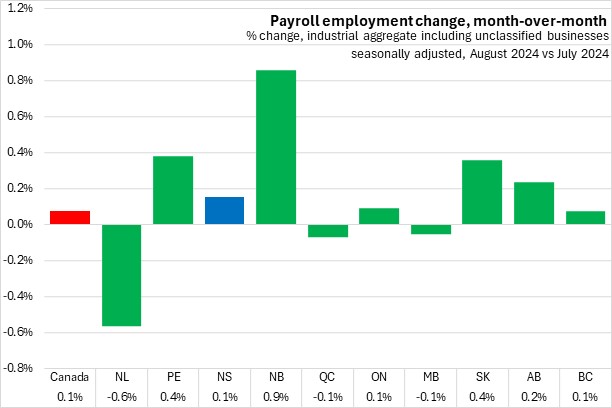
Nova Scotians' average weekly earnings were $1,133.24 in August of 2024, a gain of $10.98 (+1.0%) from July 2024.
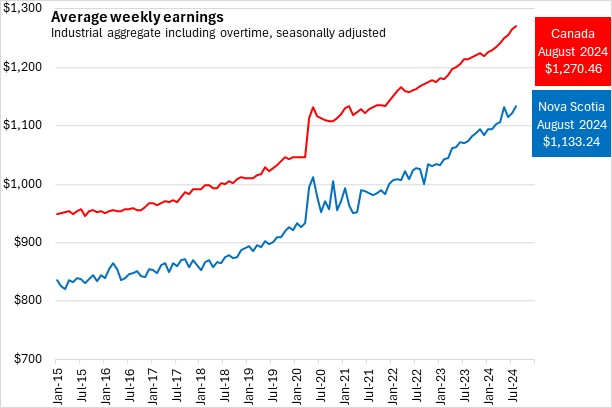
Nationally, average weekly earnings were $1,270.46, an increase of 0.4% (+$4.87) from average weekly earnings in July 2024. All provinces reported gains in average weekly earnings, led by Prince Edward Island. The slowest gains were posted in Ontario, Manitoba, and British Columbia.
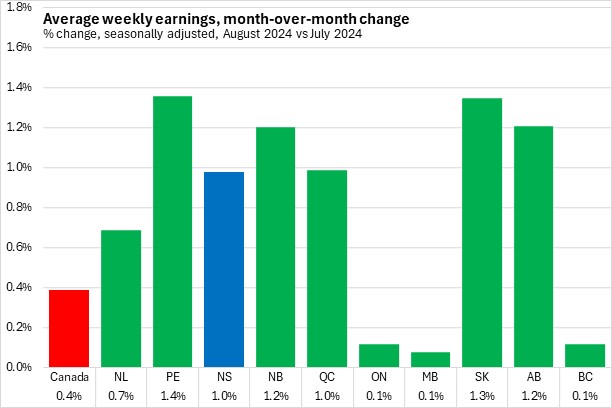
Nova Scotia's average weekly earnings in August 2024 were second lowest among provinces, ahead of Prince Edward Island. Alberta reported the highest average weekly earnings.
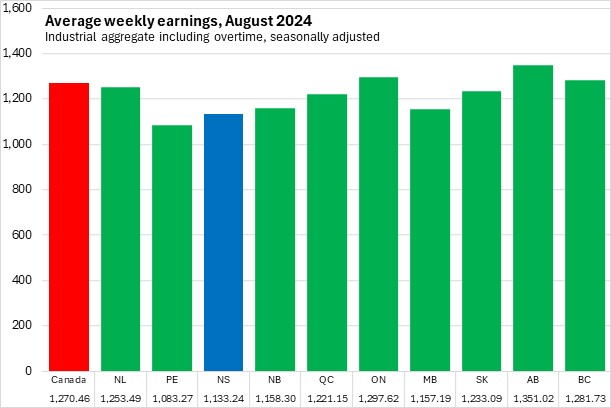
Nova Scotia's average weekly earnings were highest in information and culture, professional and technical services, and company management industries. The lowest average weekly earnings were reported in Nova Scotia's accommodations and food service industries, retail trade, and arts, entertainment and recreation.
In August 2024, Nova Scotia's average weekly wages were 89.2% of the national average. Nova Scotia average weekly wages were below the comparable national average for every industry. The smallest gaps were in health/social assistance and accommodation/food services. The largest gap was in forestry/logging (77.3% of the national average).
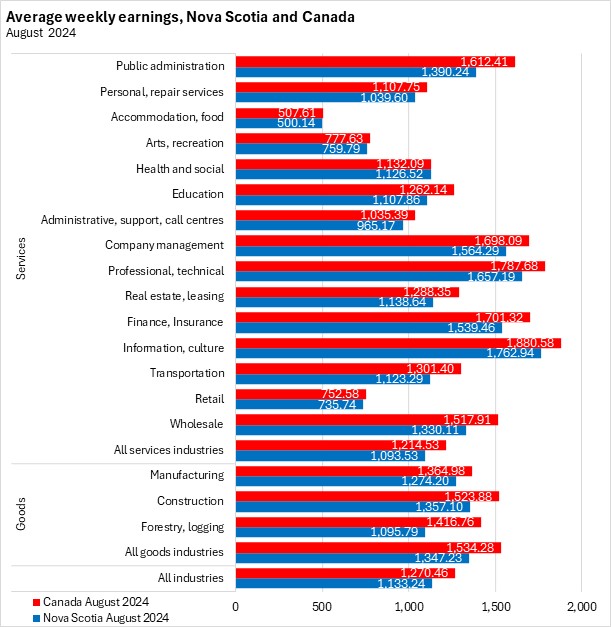
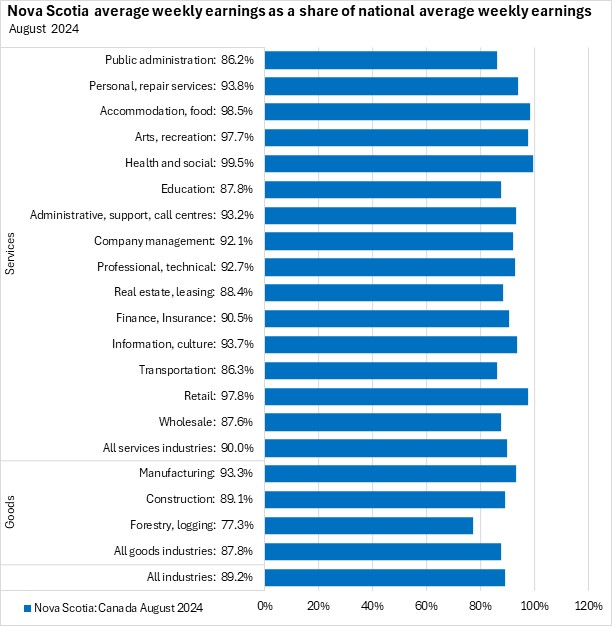
Year-over-year (August 2024 vs August 2023)
Compared with the same month in 2023, Nova Scotia's payroll employment grew by 2.0% (+8,844) in August 2024. This was higher than the national average gain of 1.0%. All provinces reported growth in payroll employment except Newfoundland and Labrador, with the fastest gain in Prince Edward Island.
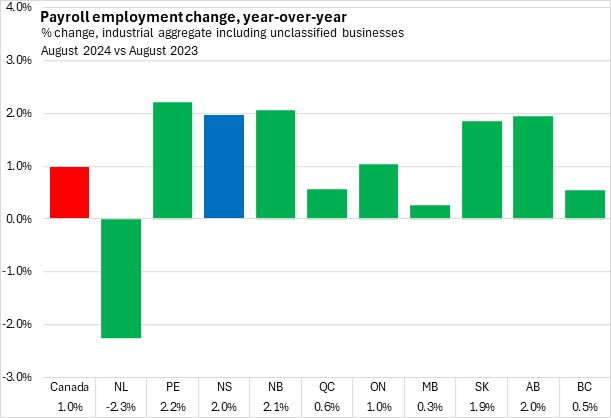
Among the industries reported on by Statistics Canada, Nova Scotia's largest industries of employment were health care/social assistance (which includes daycares), followed by retail trade and education.
Construction as well as health care/social assistance had the fastest year-over-year growth in payroll employment in Nova Scotia. Wholesale trade and administrative support/call centres reported the largest percentage declines in payroll employment.
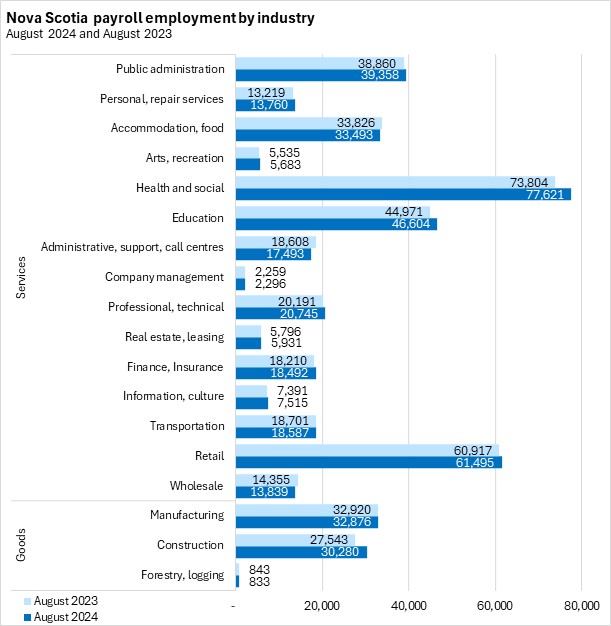
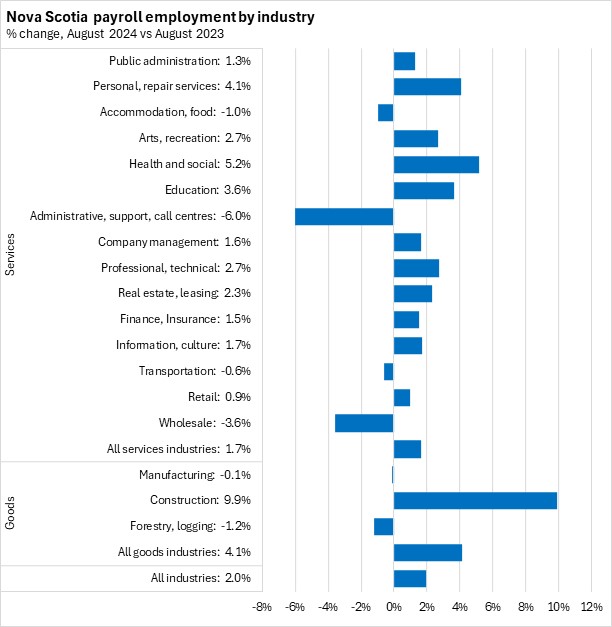
Average weekly wages grew by 5.5% in Nova Scotia from August 2023 to August 2024. This was stronger than the national pace of 4.6%.
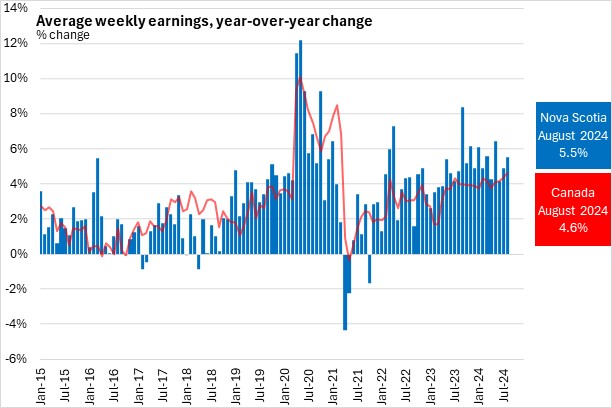
Average weekly wages grew by 4.6% across Canada from August 2023 to August 2024. There were gains in each province, with the fastest increases in Nova Scotia and Saskatchewan. New Brunswick reported the slowest gain.
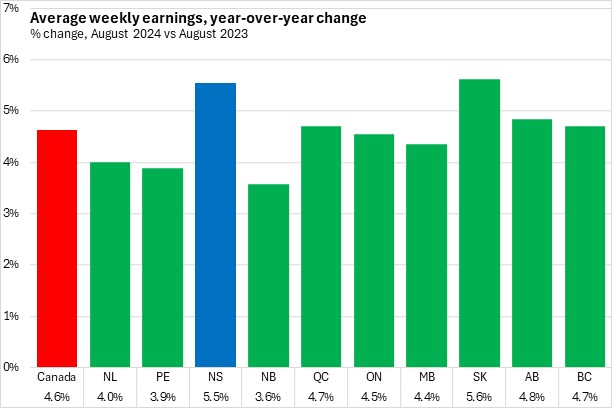
Average weekly wages were up 6.1% in Nova Scotia's goods-producing industries and up 5.1% in Nova Scotia's services-producing industries. Most of the industries reported year-over-year growth in average weekly wages with the largest increases in personal/repair services, arts/recreation, health/social services, and retail trade. Average weekly wages were down in education and company management.

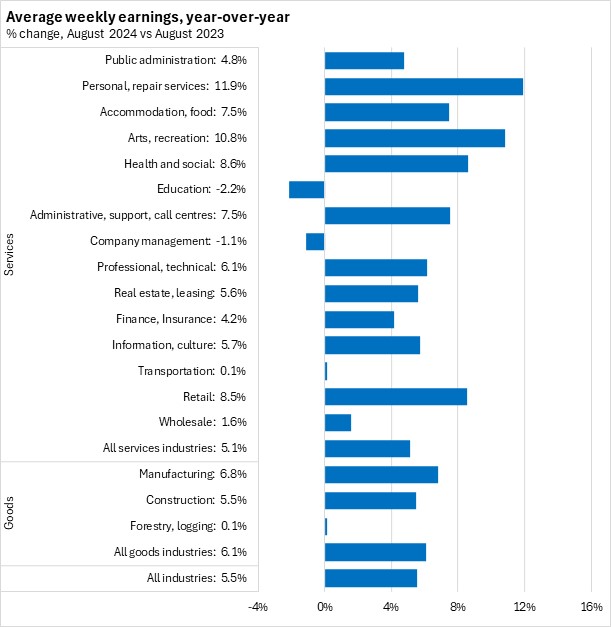
Year-to-date (January-August 2024 vs January-August 2023)
In January-August 2024, Nova Scotia's payroll employment increased 1.8% over January-August 2023, tied for largest gain among provinces with Alberta. Across Canada, payroll employment growth was 1.1% with gains in all provinces except Newfoundland and Labrador.
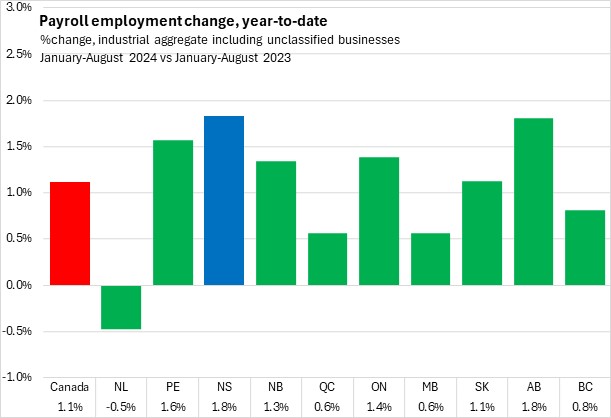
In January-August 2024, health/social assistance as well as construction industries reported the fastest employment growth in percentage terms compared to the same period in 2023. Administrative support/call centres and forestry/logging reported the largest percentage declines.
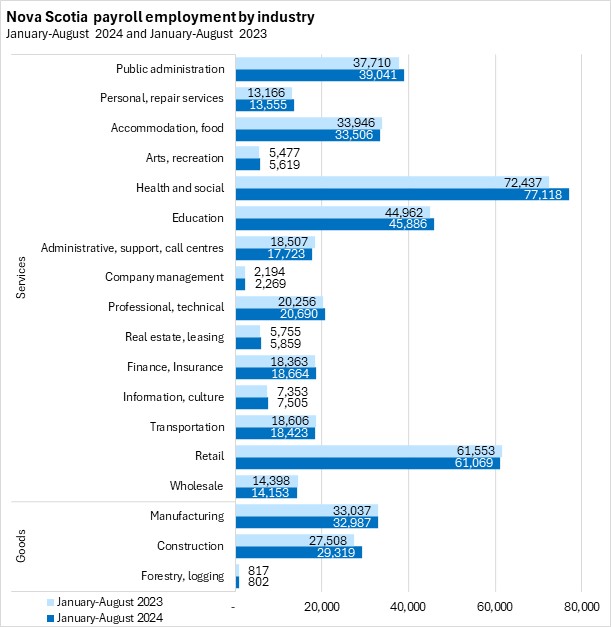
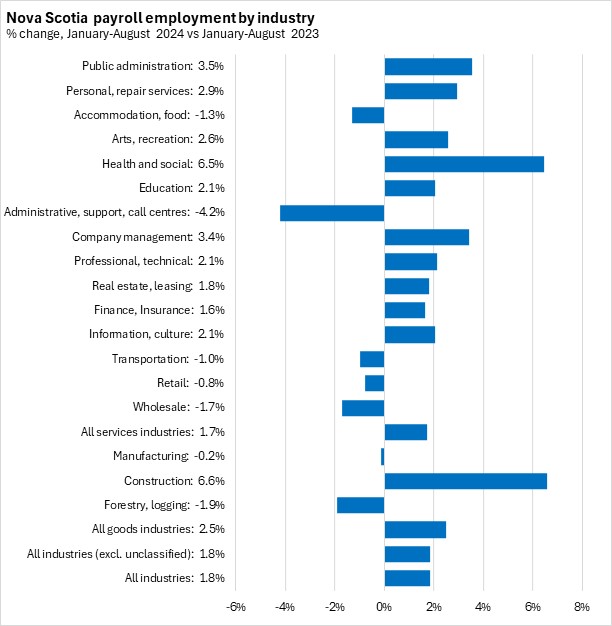
In January-August 2024, Nova Scotia's average weekly earnings increased by 5.2% compared to the same period in 2023. National average weekly earnings were up 4.1% in the first eight months of the year with gains in all provinces. Nova Scotia, Prince Edward Island, and British Columbia reported the fastest gains in average weekly earnings while Alberta and New Brunswick reported the slowest growth rates.
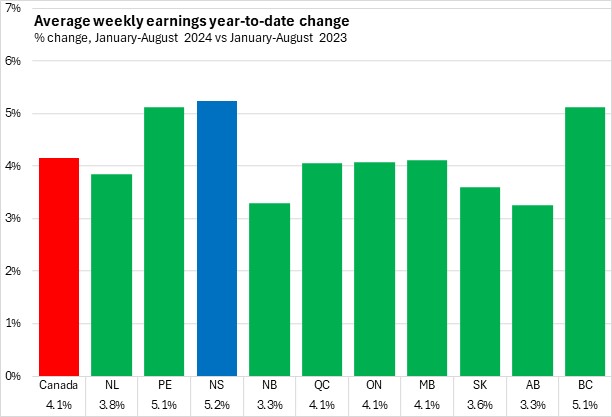
In January-August 2024, information/culture, health/social assistance, and wholesale trade reported the fastest percentage gains in average weekly earnings compared to the same period in 2023. Decline was only reported in education.
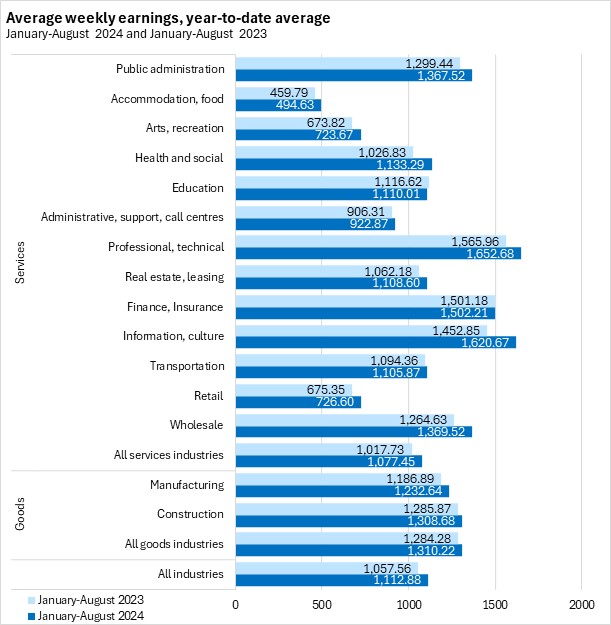
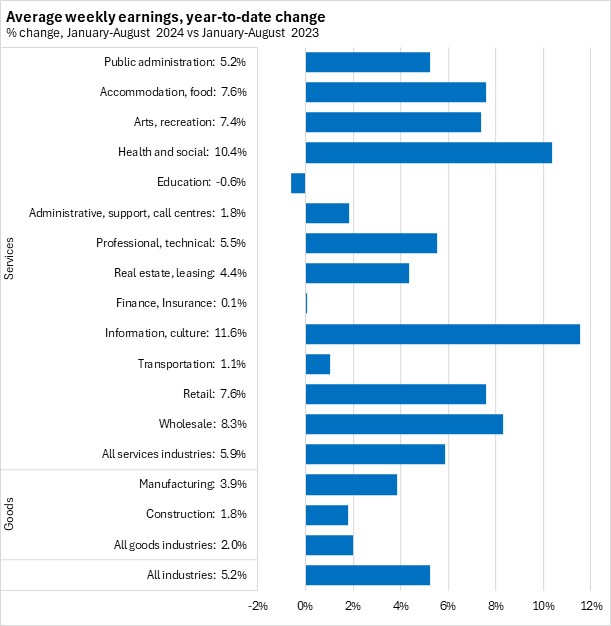
In January-August 2024, Nova Scotia's average weekly earnings were highest in professional and technical services industries followed by information/culture. Nova Scotians' average weekly earnings averaged 89.3% of the national value for all industries in January-August 2024. All Nova Scotia industries reported average weekly earnings below their national counterparts except health/social assistance. The gaps were narrowest in accommodation/food services as well as retail trade. Public administration and transportation workers in Nova Scotia reported the largest gap in average weekly earnings compared with the national average for the industry.
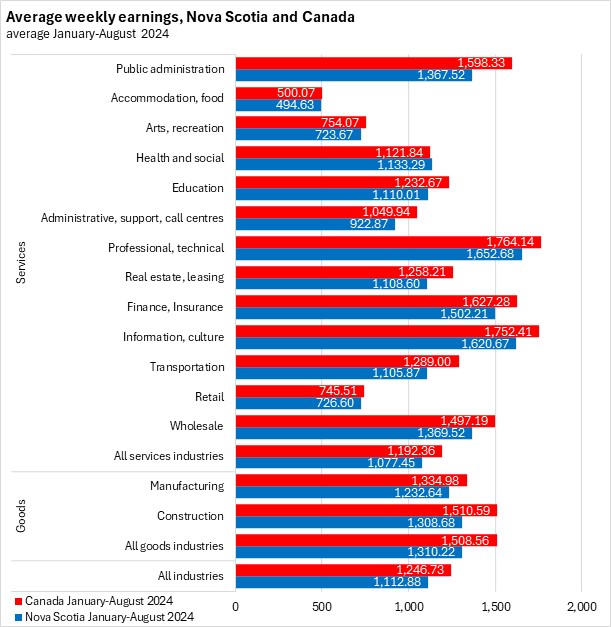
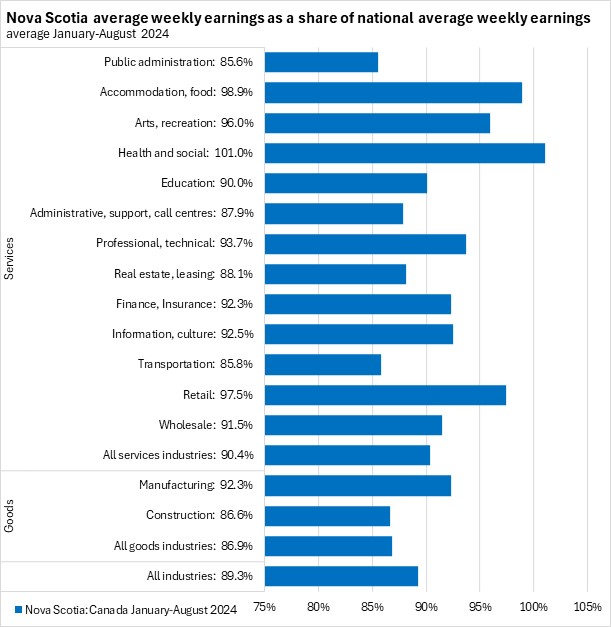
Source: Statistics Canada. Table 14-10-0222-01 Employment, average hourly and weekly earnings (including overtime), and average weekly hours for the industrial aggregate excluding unclassified businesses, monthly, seasonally adjusted; Table 14-10-0223-01 Employment and average weekly earnings (including overtime) for all employees by province and territory, monthly, seasonally adjusted
<--- Return to Archive